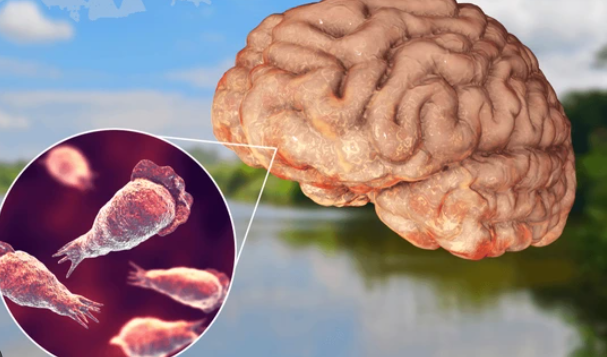Rare and Fatal Brain-Eating Amoeba Infection
Three people have recently died in Kerala, from Primary Amoebic Meningoencephalitis (PAM), a cancerous brain illness. One of them, a 12-year-old boy from Feroke in the Kozhikode district, died at a private hospital from the illness.
What is Primary Amoebic Meningoencephalitis (PAM)?
PAM is an acute disease that can be deadly. It is caused by Naegleria fowleri, an amoeba that lives in warm freshwater places like lakes and rivers. When people do things like swim, this amoeba can get into their brains through their noses. It’s sometimes called the “brain-eating amoeba” because it destroys brain tissue, which leads to serious swelling and death.
Infection Mechanism
When water with the amoeba in it gets into the nose, it goes into the body. From here, it goes to the brain, where it starts to do damage. Infections usually happen in warm water, where the amoeba can thrive because of the high temperatures and low water levels.
Symptoms of PAM
According to the CDC, the first signs are headaches, fevers, feeling sick, and throwing up. These can quickly get worse and lead to more serious problems like stiff neck, dizziness, loss of balance, and hallucinations. The disease moves quickly, and most people die within one to eighteen days of their first signs.
Diagnosis and Treatment
PAM is hard to diagnose because it is so rare and the early signs are so similar. For proof, lab tests are needed. Local hospitals in Kerala, like the Government Medical College Hospital in Kozhikode, are currently following CDC standards because India doesn’t have its own set of treatment guidelines. These new cases show how important it is to know about this deadly infection and get medical help right away.
Month: Current Affairs - July, 2024
Category: Environment Current Affairs








